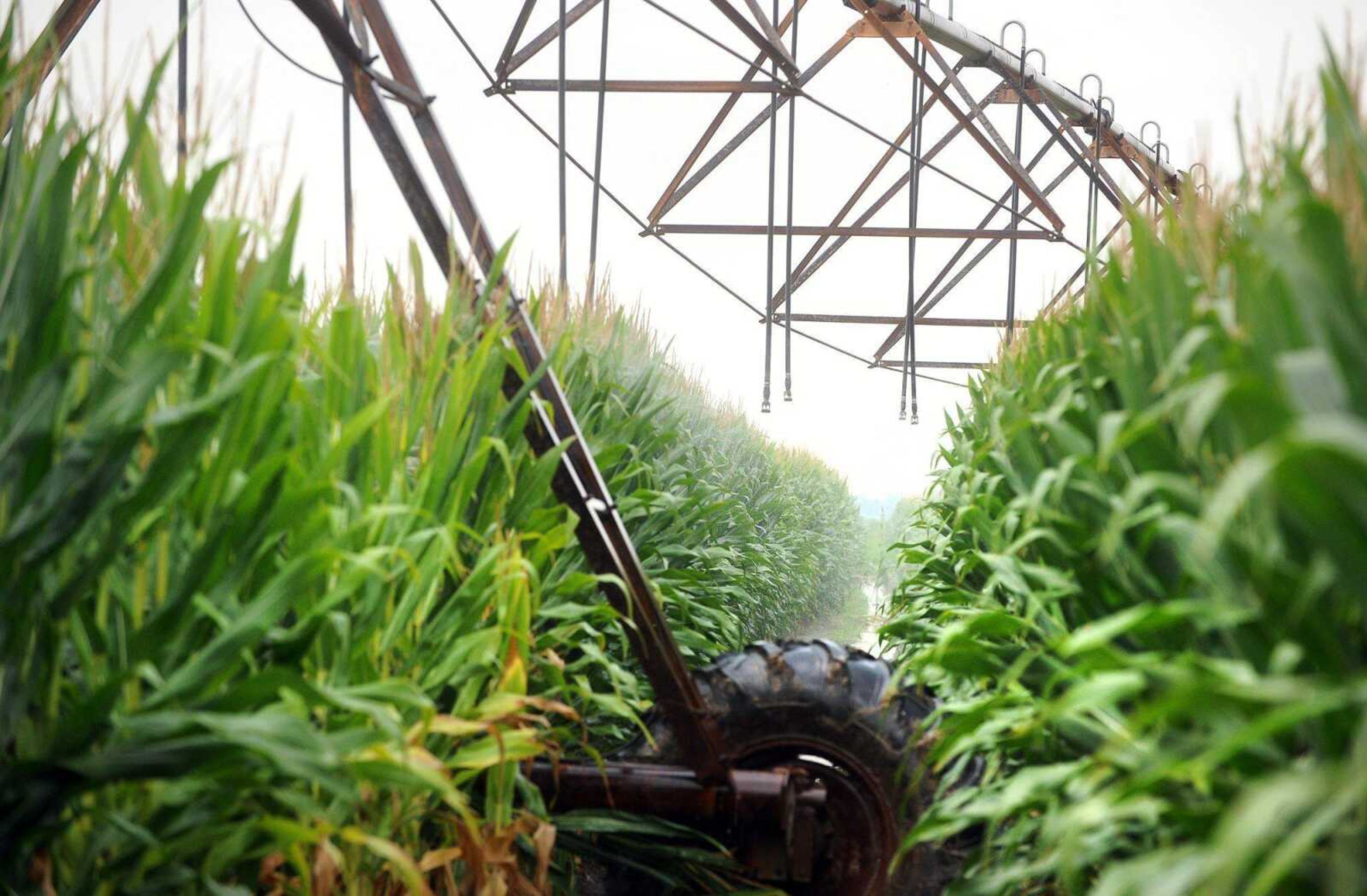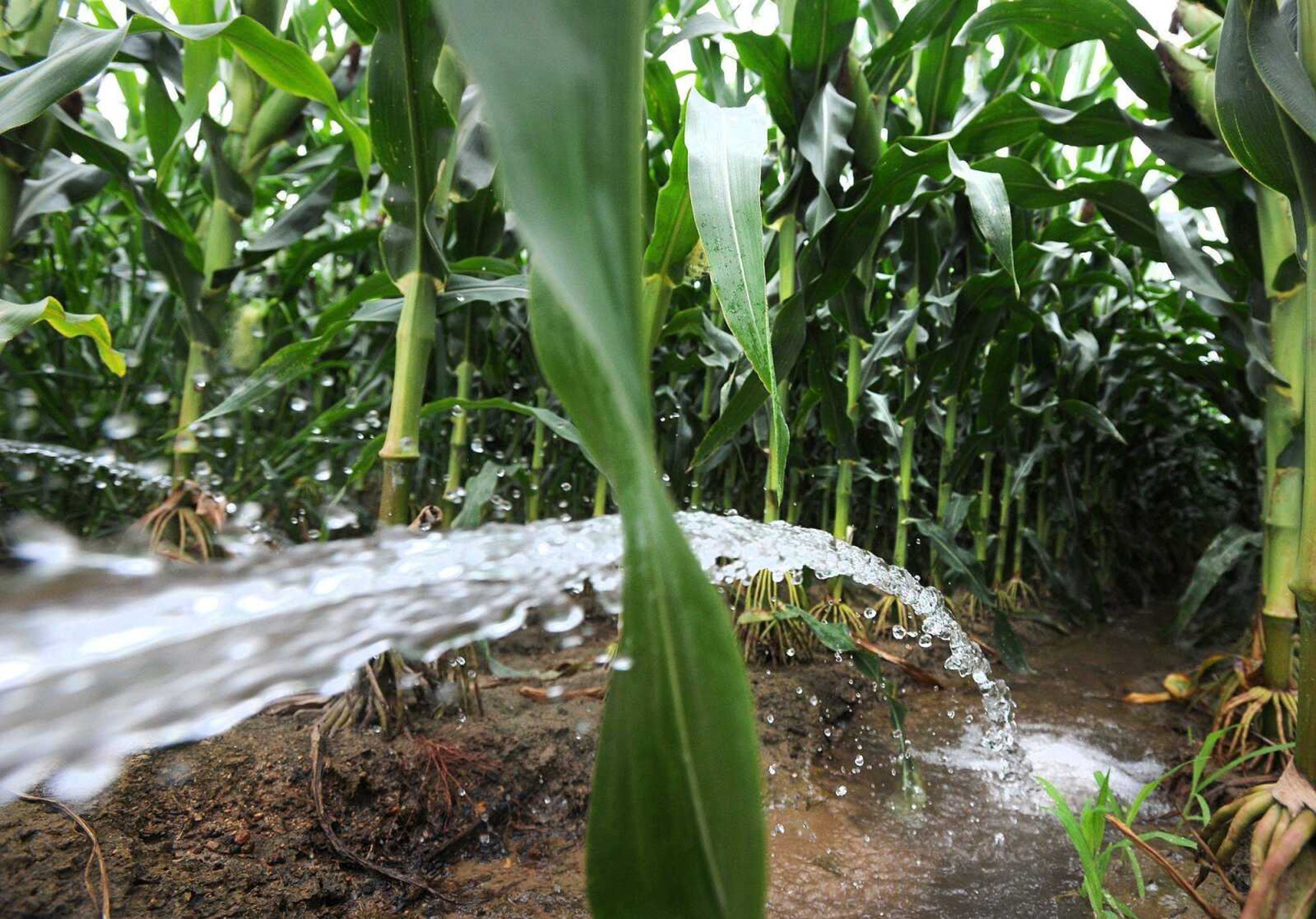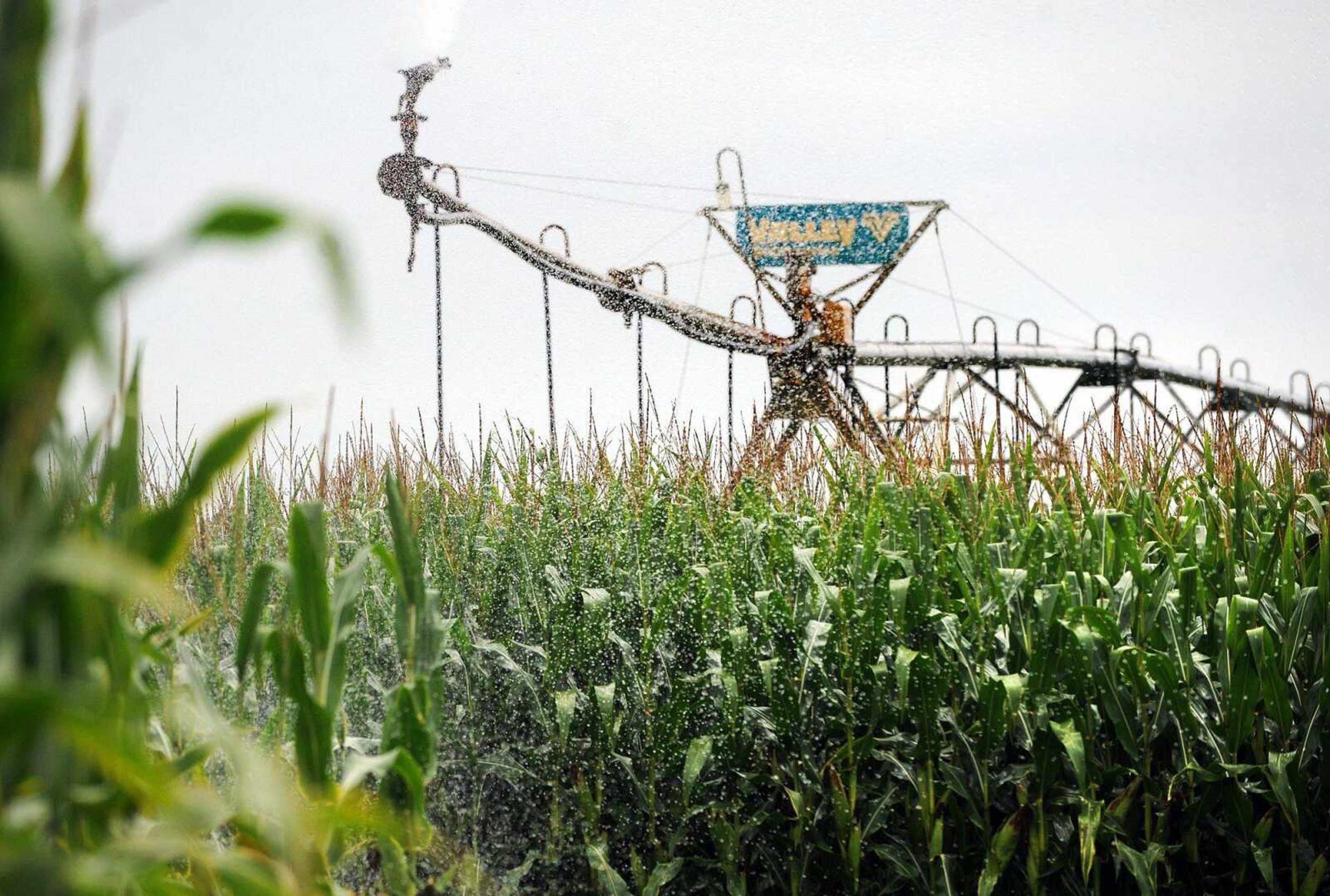Farmers brace for high corn yields, lower prices
Despite expecting a 10 percent increase in corn yields this growing season, Dan Jennings said decreased corn prices and other factors are cutting into profits. "It's going to be really tough to make money this year," he said. Jennings farms about 5,300 acres -- 1,800 of which are used for corn -- in the Sikeston, Missouri, area...
Despite expecting a 10 percent increase in corn yields this growing season, Dan Jennings said decreased corn prices and other factors are cutting into profits.
"It's going to be really tough to make money this year," he said.
Jennings farms about 5,300 acres -- 1,800 of which are used for corn -- in the Sikeston, Missouri, area.
2014 could see diminished returns for Southeast Missouri corn farmers even as average temperatures and substantial amounts of rain fuel potentially high yields, experts are saying.
"The crop looks great," said Michael Aide, chairman of the department of agriculture at Southeast Missouri State University. "The acreage is good. Everybody is just waiting to see what prices the market will bring."

Edward Dement of Dement Farms in Sikeston said he has already presold some of his corn crop for the September harvest.
"It's going to be a very big corn yield year," he said.
Climate
Part of the added corn production may be explained by a large increase in rainfall. Rainfall patterns in the United States can be shifted by the El Nino weather system, which is an "anomalous warming of sea surface temperatures in the Pacific," said Bohumil Svoma, professor of atmospheric science at the University of Missouri.
From April to June, Southeast Missouri saw near average temperatures and about 20 inches of rain, which is 50 percent above average rainfall for that period, Svoma said.

For the next three months, there is an equal chance of temperatures and rainfall being above or below normal expected measures for Southeast Missouri, he added.
However, Svoma said he believes that Southeast Missouri will be average, but "leaning toward cooler and wetter." However, it is likely that rainfall "won't be as above normal as it is now," he said.
Prices and input costs
As of Monday, the Chicago Board of Trade listed corn at $3.72 per bushel, which is about a 32 percent decrease from the same time last year, according to CNN Money.
"We're looking at harvest prices that are going to be 60 percent of what they were a year ago," said Dave Danker, president of the agriculture division at Buchheit stores.

Jennings, the Sikeston farmer, said he plans to put about 40 percent of his corn crop into storage and has already sold the rest. After Jan. 1, corn prices are usually about 40 cents a bushel higher than they are around September at harvest time.
David Reinbott of the University of Missouri Scott County Extension in Benton said input costs this year are similar to last year.
Although nitrogen is slightly less expensive this year and other forms of fertilizer "might have been down a bit," that has been offset by rising seed prices, caused by increased demand from South America and China, Reinbott said.
Aide said that because of seed, fuel, scouting, land and fertilizer, many farmers have a cost close to the market value per bushel in producing their corn.
"Profit margins are going to be razor thin," Aide said. "We're getting half of what we got a bushel from two years ago."
Although yields in the Missouri Bootheel are usually favorable, "which will help compensate to a point," if current price trends continue, the region is probably looking at a "reduction in farm income," Aide said.
Shipping
Shipping also might prove to be difficult and expensive this season for area farmers. Danker said barge availability is an issue from recent floods disturbing barge distribution along the Mississippi River.
The barge market has adjusted accordingly, with sellers on the Ohio and Mississippi rivers increasing shipping rates by 15 percent to 75 percent as of mid-July and withdrawing quotes for late September through December.
The Bakken Shale deposit oil boom in North Dakota and Montana is causing railroad shipping issues that will affect Southeast Missouri farmers as well, Danker said.
"It's a freight location problem," Danker said. "The oil boys are tying up a big part of the rail freight. There's more demand for rail service than we've got trains and crews to make it happen."
Connect with the Southeast Missourian Newsroom:
For corrections to this story or other insights for the editor, click here. To submit a letter to the editor, click here. To learn about the Southeast Missourian’s AI Policy, click here.










